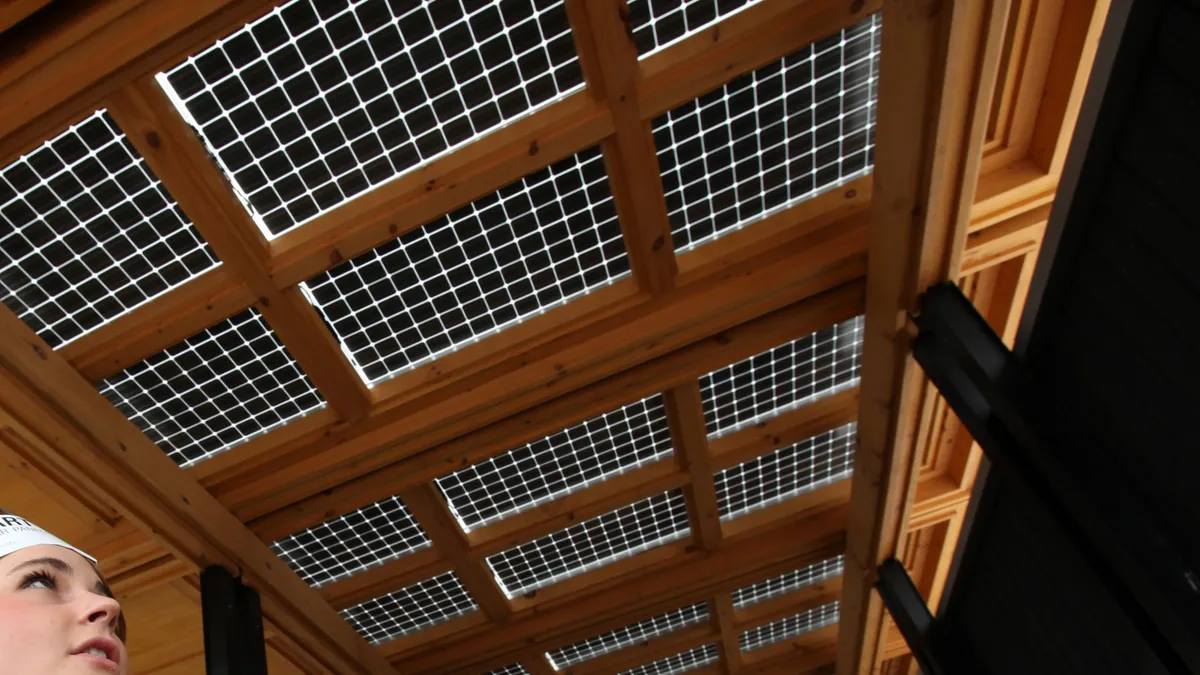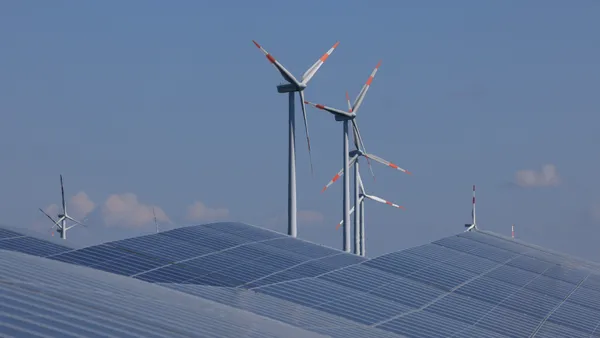Dive Brief:
- A federal court on Wednesday gave the U.S. power sector more time to purchase two-sided solar panels by foreign manufacturers without subjecting them to the tariffs that have been in place for imported solar cells and modules since January 2018.
- Judge Gary Katzmann of the U.S. Court of International Trade rejected an administration attempt to remove the tariff exemption for the more efficient two-sided, or bifacial, modules, finding the government did not "sufficiently" justify the change to the exemption. The U.S. Trade Representative (USTR) strongly disagreed with the recent ruling, saying the exemption needs to be removed to protect domestic solar manufacturers.
- "Litigation will continue and I expect that the exclusion will remain in place ... a month to a few months. Unfortunately, the government seems committed to reinstating the terms" of the tariff to apply to bifacial panels, John Smirnow, vice president of market strategy and general counsel for the Solar Energy Industries Association, told Utility Dive.
Dive Insight:
Domestic solar manufacturers have called for revoking the existing tariff exclusion for the more efficient solar panels, although developers want time to purchase the two-sided panels at lower prices based on business decisions made after the Trump administration created a full exemption from the tariffs for the bifacial modules in June 2019.
"The solar industry and the jobs it represents are important to this country, and USTR will take all necessary and appropriate steps to ensure that its safeguard relief is effective," the USTR wrote on Wednesday.
The solar tariffs were set for four years, beginning in 2018, and President Donald Trump can decide to extend them or cut them short. After the bifacial exemption was granted last July, the USTR revoked it in October, but the U.S. Court of International Trade reinstated the exemption by the end of the year as solar companies argued they had not been given an opportunity to comment on USTR's move.
The USTR accepted public comments on the exemption through February 2020 before asking the ITC to remove it in April.
But Judge Katzmann ruled Wednesday that "the Government has not met its burden of showing changed circumstances and resulting inequity in order to justify dissolution of the" preliminary injunction against removing the exemption.
Through the ruling, the judge did not rule on the merits of the tariff exemption. "Instead, the court merely continues to require the government to follow its own laws when it acts," Katzmann wrote.
Two-sided photovoltaic (PV) panels are more efficient, which has led to rapid uptake in the last year, according to Chris Deline, a researcher at the National Renewable Energy Laboratory. Wood Mackenzie reported global bifacial PV capacity was set to double in 2019 to over 5 GW, according to its first bifacial market report, and 21 GW of capacity are expected by 2024.
"Many of these bifacial modules are being deployed globally into the utility-scale market, due to bifacial PV’s ability to improve energy capture without requiring significant changes to mounting, wiring or balance-of- plant components," Deline told Utility Dive via email.
In the U.S., developers of large projects in the 500 MW to 600 MW range moved to use bifacial modules after the exemption was issued, Smirnow said, which "were entered into based on the government's [earlier] decision to grant exclusion" for bifacial modules.
"The utility-scale market is often more price-sensitive than the rooftop [solar] market, such that lower all-in module cost allows more proposed projects to pencil out, assuming adequate module supply," Deline said.
But while U.S. solar developers have won a reprieve with the court's decision, they face other challenges.
Regarding module supply, Smirnow said that an earlier manufacturing halt in China due to COVID-19 would impact the supply of bifacial modules, which companies are trying to acquire before the litigation wraps up.
Katzmann directed the parties to submit a schedule for how the case should proceed by June 17.
Despite the current uncertainty in the litigation timeline, this creates time for companies that made business decisions based on the tariff exemption "to get those modules into the U.S. before the tariffs go into place," Smirnow said.














